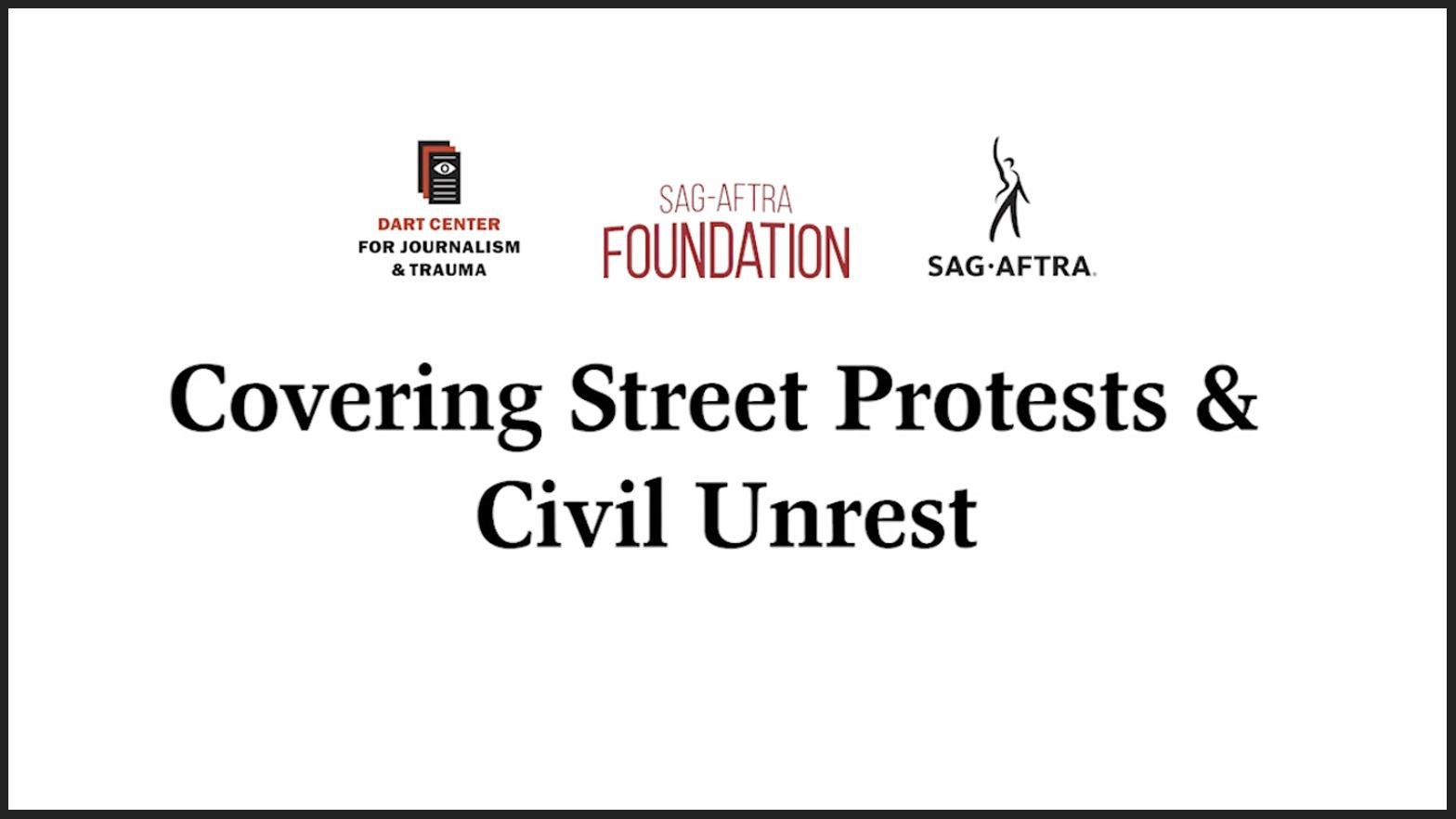Safety Tips
We are aware of journalists being injured, harassed or detained for simply doing their job and exercising their rights as members of the press. For those preparing to cover unruly protests or civil disorder, below are tips – courtesy of the International News Safety Institute and the Committee to Protect Journalists – for yourself and to share with colleagues.
Most importantly, stay safe and know your union has your back.
Before You Head Out:
- Media workers should not be expected to work alone.
- Contact protest organizers/check Facebook event: Is there a planned route?
- Research local police tactics. Is kittling, tear gas, and pepper spray likely?
- Make sure your accreditation is in order and easily accessible. Do not wear credentials on a lanyard around your neck. It could be used to choke you.
- In case of tear gas, don’t wear contact lenses and bring eye drops and spare glasses.
- In case you expect pepper spray, don’t apply face cream and cosmetics. They burn on contact.
- Request helmets, eyewear and flak jackets.
- Use earplugs to help neutralize sound cannons.
- Wear comfortable boots that you can run in.
- Wear comfortable clothes made of natural fabrics, which are less flammable than synthetic.
- Ask in advance who to call if you’re arrested.
- Have your news director/point person on speed dial. Write important phone numbers on your arm in case your phone is taken away.
- Always have a check-in procedure with your base, particularly if reporting from protest locations
- Are there Twitter hashtags to follow to track events?
- Make sure you have safe transportation to and from the assignment.
When Possible, Scope Out the Scene in Advance:
- Are there stores or areas of safety you can dart into?
- Can you cover from a high vantage point?
- Negotiate a “safe” place where you can retreat if mayhem erupts.
- Prepare a backpack with supplies to last a day:
- 70% alcohol-based sanitizer
- Disposable gloves
- N95 facemask or face covering
- Water
- Eye drops
- Lightweight raingear
- Energy bars and water
- Spare batteries for electronic equipment
At the Scene:
- Keep your media credentials with you, visible and easily accessible at all times.
- Don’t go alone. Get someone to watch your back if you’re shooting images or doing interviews.
- Remember the risk of COVID-19 and observe social distancing.
- As soon as you arrive, spot escape routes and look for landmarks like a tall building or lamppost. It’s easy to get disoriented in a crowd.
- Stay on the edge and do not get caught between police and protestors.
- Crowds have a life of their own. Stay aware of the mood.
- Move away quickly if the scene turns angry. Be on alert for aggressive people. They may provoke a violent response. Keep your station informed of the conditions on the scene and your location.
- If planning to move, seek advice from people who have just come from the direction you’re heading.
When Trouble Erupts:
- Maintain a distance from the violence.
- Avoid horses. They bite and kick.
- Stand upwind from tear gas.
- Repeat to police officers that you are the press. Keep note of officers’ badge numbers. They are required to be visible but may be hidden from view.
- If detained, call your news director your lawyer and your union representative.

As of September 21, there have been 825 reported aggressions against journalists in the U.S. including 109 arrests, 203 physical attacks (including more than 75 by law enforcement), 99 tear gassings, 61 pepper sprayings, 194 rubber bullets, among others. This 90-minute workshop will cover risk assessment and situational awareness as well as practical strategies and tactics for preparing to cover civil disturbances. Topics will include protective gear, positioning in a crowd, how to deal with tear gas, rubber bullets and other riot and crowd control tactics.
Useful Resources on Media Safety:
- Committee to Protect Journalists
- International News Safety Institute
- Press Freedom Tracker
- Afghan Journalists Safety Committee
- DART Center for Journalism & Trauma
- International Federation of Journalists
- International Women’s Media Foundation
- Global Journalist Security
- Reporters Without Borders
- Society of Professional Journalists
- UNESCO Plan of Action on the Safety of Journalists
These sites and services have been developed and are hosted by entities independent of SAG-AFTRA. All information and questions regarding these organizations and their programs or services are to be directed to the appropriate websites listed above. SAG-AFTRA does not endorse any of these websites, companies, organizations or services.
